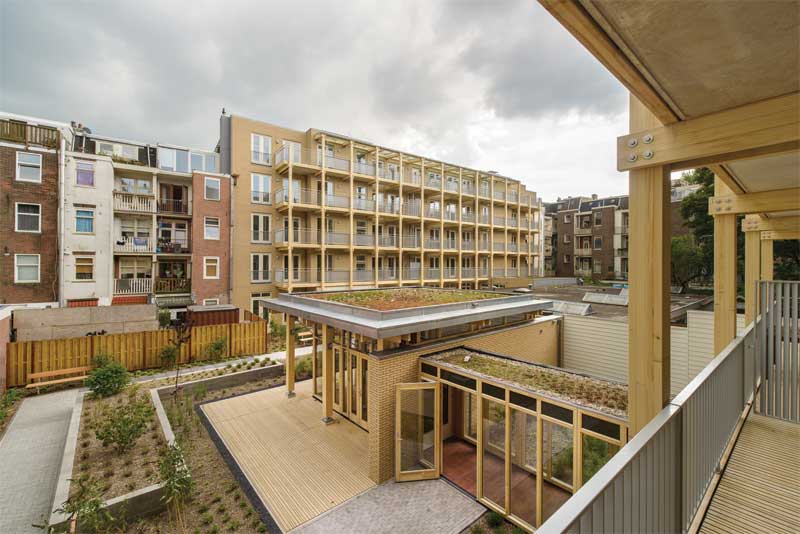Using acetylated wood for structural applications

High beams
At the entrance of Dublin City University, 54 timber posts—some as tall as 16 m (52.5 ft)—sprout skyward from the brick pavement. This imposing sculpture is the backdrop to a large platform holding the letters, ‘DCU.’ It has created a visual identity for the 20th-century institution, which is home to the Helix—Ireland’s largest
arts centre.
Made from glulam acetylated wood, the sculpture was chosen to adorn the entryway after London-based ZAP Architecture won an international design contest hosted by the Royal Institute of the Architects of Ireland (RIAI). ZAP’s creative director, Pol Gallagher, has called the monument “a bold forest of vertical timber elements, broken up by rich green spaces.”
Moisture-tolerant acetylated wood was selected for the project because the sculpture is uncovered and exposed to Dublin’s abundant rainfall—and because the material is FSC- and Cradle to Cradle Gold-certified.
The sustainable structure is steel-free, as the glulam posts are clamped into the ground.
“This wouldn’t have been possible with any other type of timber, as there would have been far too many concerns about the durability of such an essential structural component,” noted Dominik Niewerth, a project engineer at Schaffitzel + Mieback, the German timber engineering firm that consulted on the project. In addition to the
50-year guarantee previously mentioned for above-ground applications, the project’s modified wood manufacturer guaranteed the material below-ground for 25 years.
Built in 2014, the landmark structural project was the first of its kind in Ireland. Gallagher said the use of a “naturally grown and sustainably harvested, high-performance modified wood” was a must for the sculpture.
Source-sensitive
Set on a woodland site in the Scottish Highlands, the two-bedroom Dunsmore House was designed to use building materials that were energy-efficient and locally sourced. To that end, its architects specified acetylated timber groundings rather than a traditional concrete foundation. Made from Portland cement, concrete is high in embodied energy and carbon.
MAKAR, an architect-led ecological design and building company located in Inverness, rested the acetylated wood beams on concrete piers, so that the platform floats above ground. This allows for drainage in Scotland’s oceanic climate. Modified wood was chosen for the laminated beams, as its dimensional stability and durability is equal to the challenges of a moisture-heavy environment.
MAKAR architects chose acetylated wood after consulting with Edinburgh Napier University’s Centre for Offsite Construction + Innovative Structures. Although the beams are sheltered under the house, risks of fungal attack and dimensional instability on the damp building site were still worth considering, as they had strong potential to weaken the building envelope. Architects’ evaluation led them to acetylated wood as a solution, given its resistance to water and fungi. This wood also met architects’ need for an easily glued, sustainably sourced product free of toxic preservatives.
For the rest of the home, the designers chose local Scots pine, Scottish larch, spruce, and Douglas fir. Sheep’s wool insulation, south-facing windows, solar water heating, and a wood-burning stove ensure the home’s energy efficiency. To minimize construction waste, MAKAR built many of the home’s components in an indoor workshop and erected them onsite within three days.







